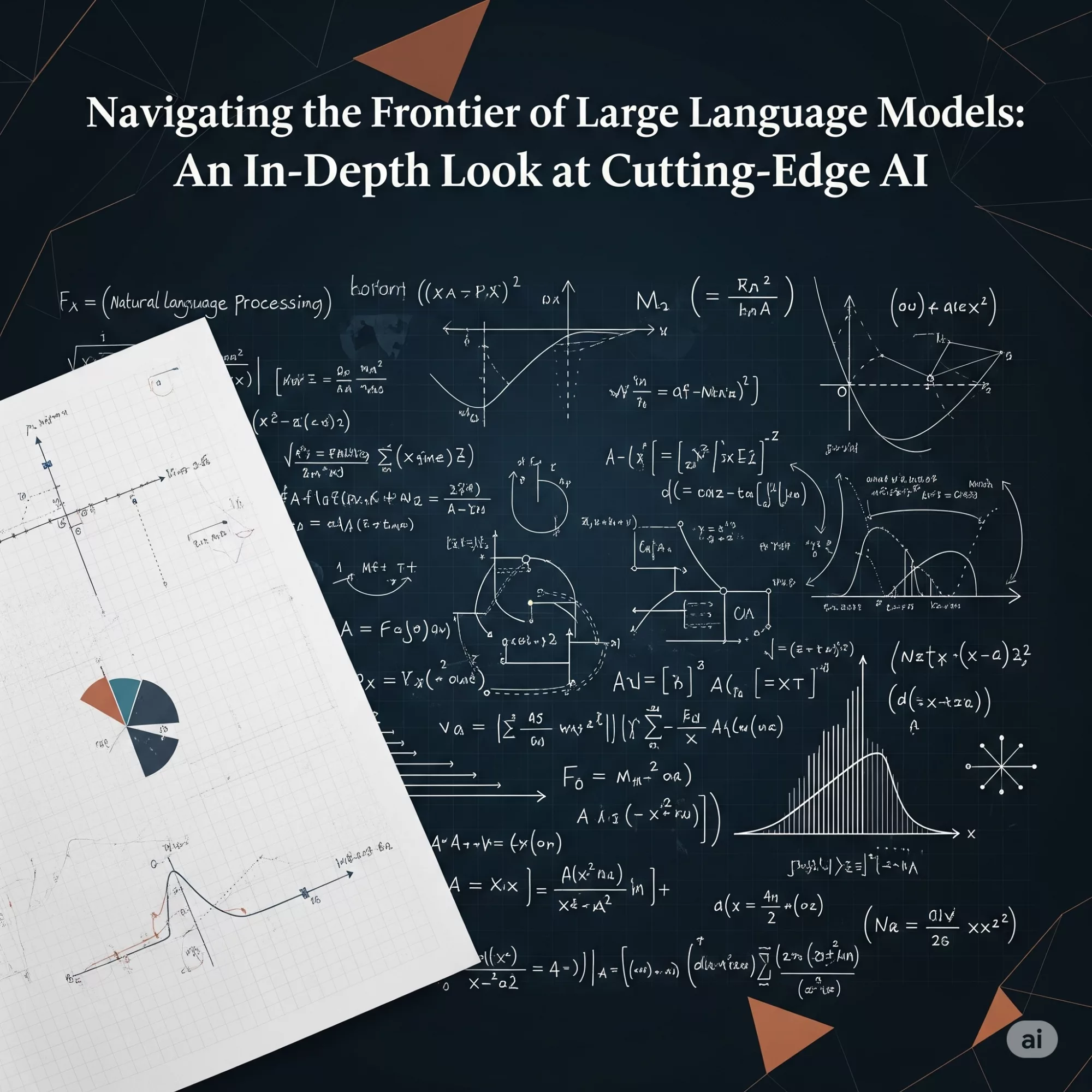The landscape of Large Language Models (LLMs) is evolving at an amazing pace. This post explores leading language models: Qwen2.5-Coder, JOSIEFIED-Qwen2.5:7b, Llama3.2:3b, Qwen3:8b, Gemma3n:e4b, Qwen2.5VL:7b, and mxbai-embed-large:335m—their architectural innovations, unique features, and diverse applications.
Qwen2.5-Coder: The Code Whisperer
Qwen2.5-Coder is a specialized model designed for software development, capable of generating, debugging, and refining code across 92+ programming languages. Recent research from arXiv (2025) shows significant improvements in code generation accuracy.Core features:
- Code Generation & Completion: Generates functions, algorithms, and boilerplate code from natural language descriptions with context-aware styling.
- Smart Debugging: Identifies syntax issues, logical bugs, and performance bottlenecks with step-by-step solutions.
- Cross-Language Translation: Seamlessly translates code between languages for multi-platform projects.
- Documentation Generation: Explains complex code and creates meaningful comments automatically.
- IDE Integration: Works with Visual Studio Code, IntelliJ IDEA, and PyCharm.
JOSIEFIED-Qwen2.5:7b: The Uncensored Conversationalist
JOSIEFIED-Qwen2.5:7b (7.61B parameters) provides direct, uncensored responses with impressive long-context features (128K input/8K output tokens). According to Hugging Face reports (2025), such models are increasingly valuable for research applications.Key Features:
- Direct Responses: Less filtered conversational style for specific research or creative contexts.
- Long-Context Support: Handles extended conversations and document analysis effectively.
- Multilingual: Supports 29+ languages.
- YaRN Technique: better long-text extrapolation maintaining best performance.
- vLLM Compatibility: Optimized processing for extended inputs.
Llama3.2:3b: Lightweight Powerhouse for Edge Devices
Llama3.2:3b (3.21B parameters) is optimized for low-latency, on-device setting it up. Meta’s 2025 research publications highlight significant advances in edge AI features.Key Innovations:
- Compact Design: Uses pruning and distillation from Llama 3.1 models for efficient operation.
- On-Device AI: Runs locally providing faster responses and better privacy.
- Multilingual: Supports eight languages.
- Strong Performance: Excels in summarization, instruction following, and knowledge retrieval despite compact size.
Qwen3:8b: The Versatile Dual-Mode Thinker
Qwen3:8b (8.2B parameters) features innovative dual-mode architecture, seamlessly switching between “thinking” mode for complex reasoning and “non-thinking” mode for efficient dialogue.Architectural Features:
- Dual-Mode Architecture: Thinking mode for deep reasoning and coding; non-thinking mode for rapid conversations.
- Advanced Instruction Following: Highly effective for agentic workflows.
- Multilingual: Supports 100+ languages and dialects.
- Extended Context: 32K native tokens, extending to 131K with YaRN scaling.
- QK-Norm: Improved attention mechanism for stable training.
Gemma3n:e4b: The Multimodal, On-Device Innovator
Gemma3n:e4b from Google integrates text, vision, and audio features with 8B parameters but operates with a 4B-equivalent memory footprint. Google Research (2025) shows breakthrough efficiency improvements.Groundbreaking Features:
- Multimodal Support: Integrates text, vision (MobileNet v4), and audio (Universal Speech Model).
- Per-Layer Embeddings (PLE): Drastically reduces RAM usage by efficiently loading parameters on CPU.
- MatFormer Architecture: Reduces compute and memory requirements while maintaining performance.
- KV Cache Sharing: 2x improvement in prefill performance.
- NVIDIA Optimization: Efficient operation on Jetson devices and RTX GPUs.
Applications:
Intelligent robotics, better mobile assistants, real-time audio/video analysis, and augmented reality experiences—bringing advanced AI to everyday devices.Qwen2.5VL:7b: The Visual Language Interpreter
Qwen2.5VL:7b (7B parameters) bridges language and visual inputs including images and videos. Released in 2025, it excels in visual reasoning, OCR, object detection, and video comprehension.Core Innovations:
- Unified Architecture: Seamlessly integrates textual, visual, and video inputs.
- Dynamic Resolution ViT: Processes images of varying dimensions without information loss.
- M-RoPE: Models temporal and spatial positions for accurate localization.
- Video Understanding: Comprehends videos over an hour long using 3D convolution.
- Visual Localization: Generates bounding boxes and structured JSON outputs.
- Agentic features: Acts as visual agent for computer and phone use.
Applications:
Document analysis, advanced OCR, visual question answering, content moderation, medical imaging, and surveillance.mxbai-embed-large:335m: The Semantic Maestro
mxbai-embed-large:335m (334M parameters) transforms text into high-dimensional vectors capturing semantic meaning. Research from arXiv Information Retrieval (2025) shows continued advancement in embedding models.Core Advantages:
- Semantic Understanding: Similar meanings produce similar embeddings regardless of word choice.
- SOTA Performance: Outperforms larger commercial models on MTEB benchmarks.
- Domain Generalization: Strong performance across tasks and text lengths without overfitting.
- Efficient Training: Uses AnglE loss on 700M+ pairs.
Use Cases:
Powers information retrieval, semantic search, recommendation systems, RAG applications, text classification, and duplicate detection.Key Trends Shaping the LLM Landscape
1. Specialization on Generalization:
Models like Qwen2.5-Coder and Qwen2.5VL excel in specific domains while retaining broad linguistic features.2. Efficiency Focus:
From Llama3.2:3b’s lightweight design to Gemma3n:e4b’s Per-Layer Embeddings, maximizing performance while minimizing resources makes AI accessible across diverse hardware.3. Multimodal Integration:
Processing text, images, audio, and video creates truly intelligent, context-aware AI systems for human-like interaction.4. Open Source Democratization:
Powerful open-source models (Qwen, Llama, Gemma) democratize AI research, fostering innovation and diverse applications across the community.5. Reinforcement Learning Evolution:
RL-first training approaches develop advanced reasoning features, leading to more autonomous problem-solving models.Conclusion: A Future Forged by Diverse AI
These models—Qwen2.5-Coder, JOSIEFIED-Qwen2.5:7b, Llama3.2:3b, Qwen3:8b, Gemma3n:e4b, Qwen2.5VL:7b, and mxbai-embed-large:335m—illustrate the incredible breadth of innovation in AI. The future isn’t about a single monolithic model, but a diverse ecosystem optimized for various tasks, setting it up environments, and performance needs.As these models evolve, they will reshape industries, enhance human features, and integrate intelligent machines into every facet of our lives. Ongoing advancements in efficiency, multimodality, and open-source availability promise an exciting era of innovation, making AI more powerful, accessible, and impactful than ever before.Model Resources
- Hugging Face Leaderboard – Open LLM performance benchmarks
- Papers with Code – ML research papers with implementation code
- Model Cards – Documentation standards for ML models
- GGUF Format – Efficient model quantization format
- ONNX Runtime – Cross-platform model inference optimization
